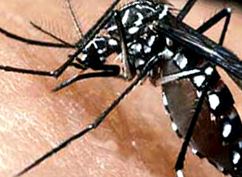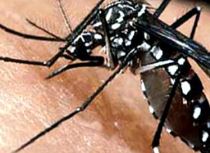
CAGAYAN DE ORO CITY – The Department of Health’s unit in Northern Mindanao said Monday there is no ‘new and deadly’ strain of dengue in the region as reports spread in social media. However, repeated infections by the four strains now present in the Cagayan de Oro City could be even deadlier.
Dr. David A. Mendoza, the chief of Epidemiology, Surveillance and Disaster Response Unit (ESDRU), has confirmed all four strains of the dengue virus in this part of the country.
“There is no cross immunity against this strains, meaning you can be sick with dengue fever at least four times in your life time,” he warned. “Worse, if a person is inflicted with more than one virus (what we call as cross immunogenicity), the more sever the infection. This could be the reason why infections here in Cagayán de Oro City are such.”
Dr. Mendoza said technically, the DOH cannot declare an epidemic in Cagayan de Oro since it is endemic in the city. “What we have is hyperendemicity where cases are higher than the usual endemic cases.”
HYPERENDEMIC DISEASE
A hyperendemic disease is defined as one that is constantly present at a high incidence or prevalence rate and affects all age groups equally, according to mediLexicon.com.
In its latest bulletin, the ESDRU reported 192 new cases from July 21-30 raising the year-to-date total to 2,304 cases, based on region-wide hospital records, with fortunately no deaths reported for the latest period. The total is 109.45 percent higher than the YTD total for 2011 reported at 1,100.
Most of the cases were reported in Misamis Oriental (74.7%) with the municipalities of Jasaan (2.9%) and Tagoloan (2.7%) reporting the highest incidence of suspected admissions. The other provinces accounted for 12.2% (Bukidnon), 9.10% (Lanao del Norte), 3.6% (Misamis Occidental) and 0.4% (Camiguin).
Of the 9 cities in Northern Mindanao, Cagayan de Oro reported the highest increase (54.60%) followed by Iligan (6.5%) and Valencia in Bukidnon provcince (2.4%).
4S
Dr. Mendoza urged residents of the areas with the highest reported incidence to strictly observe the “4S” methodology for the prevention and control of the dengue virus.
This include searching and destroying breeding sites of the Aedes aegypti mosquito vector especially dark and cool places where clean water is stored; seek early consultation and bring the patient to the nearest health center or clinic for evaluation if there a fever persists for over two days with muscle and joint pains, pain in the back of the eyes, rashes all over the body; self-protection by wearing long sleeves and pants to avoid being bitten by mosquitoes, use of insect repellents and mosquito nets; and say no to indiscriminate fogging which is only recommended when there is an extreme increase in the number of cases in an area.
“Fogging does more harm to the people than the mosquito population,” Dr. Mendoza warned. “Only adult mosquito can be killed or driven to other areas by indiscriminate fogging.”
BANTAY DENGUE BRIGADE
He also urged local governments to activate their Bantay Dengue Brigades and intensifying their information, education and communication drive encouraging residents to strictly follow the 4S methodology to prevent and control the disease.
The ESDRU reported 33 villages in the region with three or more confirmed cases last month and with the most number found in Cagayan de Oro City (20), seven in Misamis Oriental, four in Iligan City and two in Bukidnon.
Cases in Cagayan de Oro were reported in the following villages – Agusan, Balulang, Barangay 26, Bayabas, Bugo, Bulua, Camaman-an, Canitoan, Carmen, Cugman, Gusa, Iponan, Kauswagan, Lapasan, Macabalan, Macasandig, Nazareth, Patag, Puerto and Tablon.
And in Iligan City – Poblacion, Luinab, Saray and Tibanga, while in Misamis Oriental province – Poblacion and Santa Cruz in Tagoloan, Imelda and San Martin in Villanueva town; Taytay in El Salvador town, Barra in Opol and Lunao in Gingoog City, while those in Bukidnon were Kiburiao in Quezon and Poblacion in Valencia City.
OL TRAPS
Meantime, the Department of Science and Technology distributed some 435,000 Ovicidal-Larvicidal Traps (OL) to all public elementary and secondary schools nationwide.
DOST Sec. Mario Montejo said OL Traps prevent the larvae from maturing into dengue-carrying mosquitoes, thus containing and reducing the spread of the disease in places where mosquitoes congregate and breed during daytime, like classrooms.
The OL Trap is a simple technology that kills the eggs and larvae of the female Aedes aegypti mosquito that carries the dengue virus. The black container attracts mosquitoes to lay their eggs on the lawanit strip soaked with the OL pellet-water solution. The OL pellets, made of organic and non-toxic material, attract mosquitoes and kill their young, in effect reducing the number of the next generation of mosquitoes.
The program has identified 31 priority areas that will receive the first batch of OL Traps totaling some 435,000 kits nationwide. DOST produced the initial batch of traps and has transferred the production of OL pellets to a private entrepreneur.
Unfortunately, DOST Regional Director Alfonso P. Alamban said they have so far been unable to find a distributor for the OL Traps in the region despite the proven success of the product to control the dengue mosquito.
Bukidnon provincial health officer Dr. Teresita Damasco said in a previously published report that while the OL Trap was effective, it was only one of their many strategies to control the spread of the disease and it was the community’s concerted effort that was the key.
OL traps were distributed by the DOST in 2011 to 100 test households in five areas identified to have high morbidity in 2010 – Suna Village in Sumpong; Kubayan and NHA 1 in Casisang, Malaybalay City; a purok in Poblacion Quezon; Vizmin Area, Poblacion Pangantucan; and Artajo Village in Alae, Manolo Fortich.
Bukidnon had 1,216 recorded cases in 2010 but the number of cases dropped by 97 percent to only 42 in 2011. However, from January to July 2012 so far, there were already 137 cases dengue and seven deaths.
Besides the deployment of the OL traps, Dr. Damasco said barangay dengue brigades of the LGUs actively searched and destroyed the mosquito’s breeding places and actively campaigned to ask communities to strictly implement the 4S methodology. (By Mike Banos. With reports from Jorie Valcorza, Rutchie Aguhob and Abigail Chee Kee Malalis).

